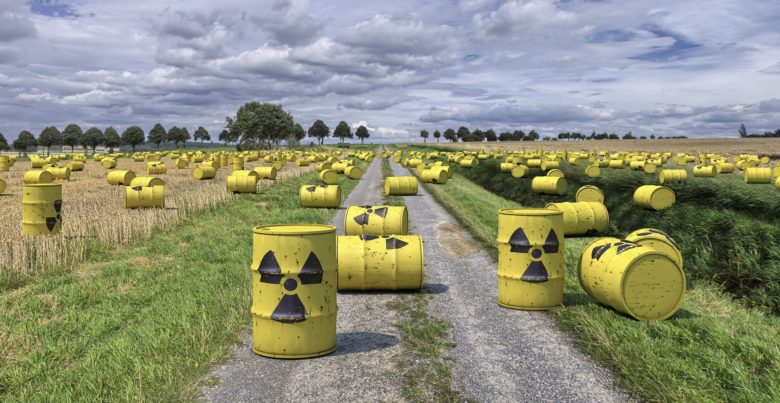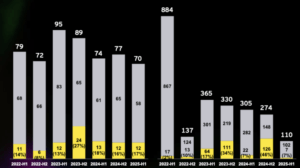CONTRA: Green nuclear power? Not really

So now it’s official, investments in new nuclear power plants are sustainable. At least that is the classification of the EU Commission within the framework of the taxonomy regulation. So that means: nuclear energy is good for the climate. Or?
In Austria and Germany, this statement will send chills down the spine of most people. No wonder, since a nuclear power plant was built in Austria but never put into operation, and Germany also literally pulled the plug on the last nuclear reactors at the end of the year (Trending Topics reported).
For other nations, however, the statement is no reason to shudder. On the contrary, with the push of nuclear energy, decarbonization should be achieved and finally freed from coal dependence.
Zero emissions? Too short-sighted
The first argument in favor of this: When generating energy from nuclear power, there are supposedly no CO2 emissions. The second argument: This energy source is independent of the weather and the time of day and night. In this way, the security of supply is to be guaranteed and a blackout horror scenario is to be avoided.
Alright, so two arguments for it. So let’s start with the arguments against it. First to the argument of CO2 neutrality: Even if the direct generation of electricity does not cause any emissions, the mining of uranium, the construction and dismantling of the reactors, and the transport of nuclear waste does. The Intergovernmental Panel on Climate Change (IPCC) quotes values between 3.7 and 110 g CO2/kWh and a median of 12 g per CO2/kWh for uranium.
Expensive, expensive fun
Next argument: the costs. Nuclear power = expensive electricity. The construction of a nuclear power plant devours gigantic sums of capital. This is also shown by current works that are currently under construction. The European pressurized water reactor (EPR) “Flamanville 3”, which has been under construction in Normandy since 2007 by the French energy company EDF, was originally planned to cost €3.3 billion.
The operator EDF stated in mid-January that it was now assuming total costs of €12.7 billion. According to a report by the French Court of Auditors, however, the costs could increase to up to €19.1 billion by then.
In addition to the high costs, there is also a long construction period. Let’s stay with the example: If the figure stays at 2023, it would take eleven years longer than originally estimated. New nuclear power plants, which are not even under construction yet, will not contribute in any way to the climate goals in the near future. According to a study by international researchers from “Scientists for Future” published in October 2021, given the stagnating or declining construction of nuclear power plants in all nuclear power countries (except China), nuclear power could take two decades (and more) and foreseeably short planning and construction times technical innovations play no role in the periods of two to a maximum of three decades that are relevant for combating the climate crisis.
And until then? Natural gas and coal energy? Neither we nor the earth can afford that.
In comparison to nuclear plants, renewable energy appears significantly cheaper. According to a report by the International Renewable Energy Agency, the costs for renewables fell sharply again in 2020. As early as 2020, the International Energy Agency (IEA) described solar energy as the world’s cheapest way to generate electricity – ahead of oil, gas, nuclear power, and coal. “Solar power is the new king of electricity,” says the IEA report.
What to do with the garbage?
But the absolute counter-argument remains – the radioactive waste. Basically, if I don’t know where to put the rubbish, then it’s better not to cause it. So far, there is not a single repository in the world for the waste that will continue to radiate for another 100,000 years. One is under construction in Finland and one has recently been approved in Sweden. But there is no solution. The fact remains that radioactive waste is produced, which poses a potential danger long after our time.
The current research on small modular reactors (SMR), i.e. mini nuclear power plants, and thorium reactors will not change that. The German physicist Christoph Pistner from the German Ökoinstitut, who has researched new reactor concepts, comes to the conclusion that thorium does not offer a solution for final disposal either. Although thorium radiates for a shorter period of time (“only” just under 300 years), which means that the fuel poses a lower risk in the repository in terms of time, waste still continues to be produced. Renewable energies, on the other hand, do not cause countless years of radiant waste. Old solar panels and wind turbines are also recyclable.
The green dream remains a dream
It could go on like this for a while. Other arguments would be the devastating consequences of core meltdowns or the potential danger of uranium being used for military purposes. Instead of investing huge sums of money in a form of energy that is neither CO2-neutral nor economically viable, renewable energies and, above all, efficient storage options from them need the money and research. In addition to the possibility of conserving this in the form of green hydrogen as an energy source, there are already numerous examples of innovative storage ideas, such as a sea battery or conversion into “liquid air”. This means that energy would also be available when the sun wasn’t shining.
And last but not least: According to the report “The Sky is the limit” by the British think tank Carbon Tracker, the world’s energy requirements could be met a hundred times over by wind and solar power plants alone. To do this, the corresponding potential would have to be used and renewable energies expanded accordingly. So instead of dreaming of climate-neutral nuclear power, we have to start expanding what we already have. We have enough space, now the expansion just has to be approved. Because honestly, in the end, every windmill is more beautiful than a nuclear reactor.
We tried to look both at the advantages and disadvantages of nuclear energy. Take a look at the PRO arguments.






























